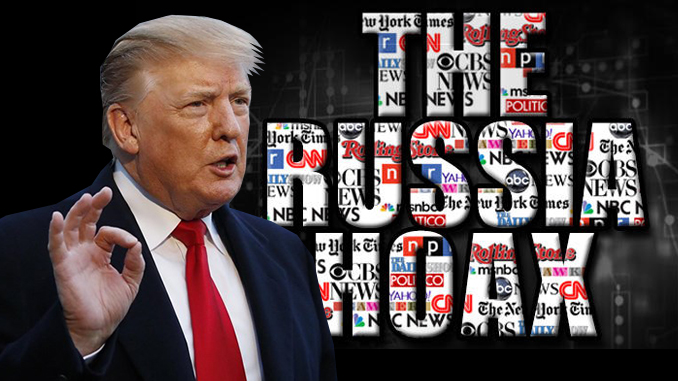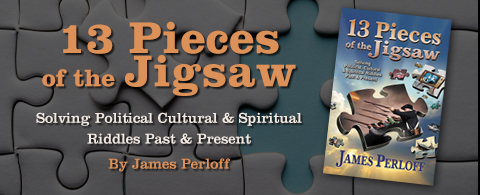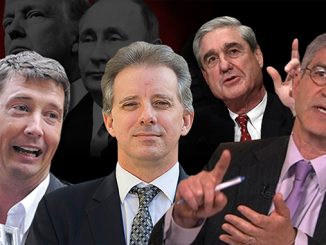
Agency’s own documents admit “Russian collusion” a fairytale.
By S.T. Patrick
Weeks after Donald Trump’s inauguration, The New York Times published a headline that would direct the narrative pushed by the mainstream media for the duration of Trump’s first term: “Trump Campaign Aides Had Repeated Contacts with Russian Intelligence.” MSNBC and CNN had already become obsessed with the idea that Facebook-hacking Russians had somehow tilted the election away from Hillary Clinton and toward Trump. Now, it was deeper. Trump officials had colluded with Russian intelligence officials in some kind of international cabal. A modernday witch hunt had been ignited. What we now know from declassified documents is that the story that fueled Russiagate was completely false.
FBI Director James Comey disputed the article’s premise to the Senate Intelligence Committee. “In the main, it was not true,” Comey testified under oath. A newly released document details the FBI’s own internal assessment, which was written by the FBI’s former Chief of the Counterespionage Section Peter Strzok.
The Times had directly linked “phone records and intercepted calls” of Trump campaign officials to Russian intelligence. In the now declassified memo, Strzok wrote, “This statement is misleading and inaccurate. . . . [W]e have not seen evidence of any individuals affiliated with the Trump team in contact with intelligence officials. The FBI has information on the following individuals in contact with Russians (both governmental and non-governmental): [redacted]. There is no known intel affiliation and little if any government affiliation.”
One campaign official linked to the contact with Russian officials was campaign chairman Paul Manafort, who in May was released from prison to home confinement due to Covid-19 concerns. On Manafort, Strzok wrote, “We are unaware of any calls with any Russian government official in which Manafort was a party. If this material is held by the U.S. Intelligence community, we aren’t aware of it. Both CIA [Central Intelligence Agency] and NSA [National Security Agency] are aware of our subjects, and throughout the summer we provided them names and selectors for queries of their holdings as well as prospective collection.”
In essence, Strzok is frustratingly explaining that he doesn’t know from where these stories or the names contained within are coming, but that the FBI and other agencies haven’t been able to find any corroborating evidence to support them. The Times had reported that the NSA had captured the calls from the Trump team to foreign intel officials as part of routine surveillance. To that Strzok responded, “If they did, we aren’t aware of it.”
The Russiagate story has made some strange bedfellows of journalists both left and right. Some of the fiercest Russiagate critics have been from the political left. Aaron Maté, Caitlin Johnstone, Whitney Webb, Elizabeth Vox, and Matt Taibbi have all refuted Russiagate, all criticizing the story since nearly day one. Maté, a periodic columnist for the leftist magazine The Nation, hosts a Twitter feed that still contains an almost daily dose of Russiagate criticism.
Responding to the news that The New York Times still stands by its 2017 Russiagate reporting, Maté tweeted, “Do they stand by this story that Strzok refuted privately, Comey refuted publicly, and Mueller found no evidence of like they stand by their Russia bounty story, which their own reporting contradicted? That’s not standing by reporting, it’s denying reality.”
Strzok admits that the Times story was almost correct in that it stated the FBI had investigated the ties of Carter Page, Michael Flynn, and Roger Stone to the Russian contacts. The word “almost” is important in light of recent events. Strzok points out that the Mueller Report found no evidence on Page, and the investigation into Flynn was quickly ended when “no derogatory information” was found. Strzok then points out that there had never been an FBI investigation into Stone, whose sentence was recently commuted by Trump.
This shows the completely dishonest yet ongoing disconnect between the mainstream media and the truth. As former Rolling Stone magazine writer Taibbi recently tweeted, “The point I have been trying to underscore for years was that newspapers published ‘leaks’ about Russia their own sources knew to be untrue.”
Even The Hill, a trusted and usually nonpartisan D.C. source of information distributed free on Capitol Hill, reported the truth of what the document showed. Their headline on the story read, “New FBI Document Confirms the Trump Campaign was Investigated Without Justification.”
Kevin R. Brock of The Hill wrote for its website, “the nation was left with an investigation of a presidential campaign that had no legitimate predication; that spawned a Foreign Intelligence Surveillance Act intercept of a U.S. citizen that had no legitimate predication; that resulted in a confrontation with a new administration’s national security adviser that had no legitimate predication; and, finally, that led to an expensive special counsel investigation that had no legitimate predication. No pattern-recognition software needed here.”
If the largest players in the mainstream media have begun inventing stories from the loftiest hopes and dreams of angry partisans, what comes from them can never be taken as truth.
S.T. Patrick holds degrees in both journalism and social studies education. He spent 10 years as an educator and now hosts the “Midnight Writer News Show.” His email is [email protected]. He is also an occasional contributor to TBR history magazine and the current managing editor of Deep Truth Journal (DTJ), a new conspiracy-focused publication available from the AFP Online Store.





